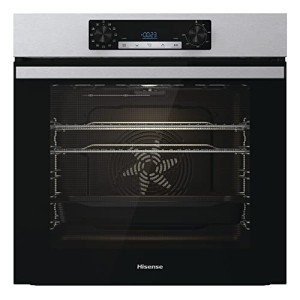
Single Built-In Ovens
Add a review FollowOverview
-
Founded Date August 24, 1909
-
Posted Jobs 0
-
Viewed 7
Company Description
20 Questions You Should Always Ask About Single Oven Before You Buy Single Oven
The Ultimate Guide to Single Ovens: Features, Benefits, and FAQs
When it concerns contemporary kitchen devices, the single oven stands apart as a flexible and necessary tool for any cooking lover. In today’s hectic world, where convenience meets culinary craftsmanship, single ovens play an essential function in meal preparation. Comprehending the features, advantages, and types of single ovens can simplify the procedure of picking the perfect home appliance for your kitchen. This extensive guide intends to offer an extensive take a look at single ovens, their specifications, and responses to often asked questions.
What is a Single Oven?
A single oven is a kitchen appliance that includes one main cooking compartment. It is developed to perform various cooking functions such as baking, roasting, broiling, and more. Unlike double ovens, which consist of 2 different cavities, Buy Single Oven ovens maximize area efficiency, making them appropriate for smaller kitchens or those who often prepare meals for a couple of individuals.
The Anatomy of a Single Oven
In order to appreciate the functionality of a single oven, understanding its essential elements is essential:
| Component | Description |
|---|---|
| Cooking Cavity | Main space where food is positioned for cooking. |
| Control board | Interface for picking cooking modes and changing temperature. |
| Heating Elements | Metal coils that create heat (typically discovered at the top and bottom). |
| Oven Door | Glass panel that allows presence into the cooking area. |
| Racks | Detachable shelves that accommodate numerous meals at various heights. |
Kinds Of Single Ovens
Single ovens come in various types based upon their heating techniques and designs. Here are some popular alternatives:
-
Conventional Ovens: Utilize gas or electrical energy for a conventional cooking experience. They offer constant heat for baking and roasting.
-
Convection Ovens: Equipped with a fan that flows hot air, leading to quicker cooking times and even heat circulation.
-
Steam Ovens: Use steam to prepare food, maintaining moisture and nutrients. Perfect for much healthier cooking techniques.
-
Wall Ovens: Built into the wall to save space; they can improve kitchen visual appeals while providing performance.
-
Microwave Ovens: While not a traditional oven, modern-day microwave ovens can likewise bake and roast, offering benefit for fast meal prep.
Features to Look for in a Single Oven
When acquiring a single oven, consider the following functions to ensure you pick a device that suits your cooking requires:
-
Capacity: Ensure the oven’s size accommodates your normal cooking volume. Standard capacities typically range from 4.5 to 6 cubic feet.
-
Temperature Range: Look for an oven that offers a wide temperature range for various cooking methods.
-
Self-Cleaning Options: Self-cleaning modes bypass the need for harsh chemicals, making maintenance easier.
-
Smart Technology: Wi-Fi-enabled models allow remote operation and tracking through smart device applications.
-
Interior Lighting: Bright, incandescent or LED lighting assists monitor your food without unlocking.
Typical Sizes and Capacities of Single Ovens
| Type | Typical Capacity (cubic ft) | Width (inches) | Height (inches) |
|---|---|---|---|
| Standard Conventional | 5.0 – 6.0 | 30 | 28 – 30 |
| Compact/Apartment Size | 3.0 – 4.0 | 24 | 28 – 30 |
| Wall Oven | 4.5 – 5.0 | 24 – 30 | 28 – 30 |
Advantages of Using a Single Oven
Buying a single oven uses many benefits for both amateur cooks and skilled chefs alike:
-
Space Efficiency: A single oven inhabits less area than a double oven, making it best for smaller sized cooking areas.
-
Cost-Effective: Generally more economical compared to double ovens, both in preliminary purchase and energy consumption.
-
Adaptability: Capable of performing various cooking strategies, making it suitable for a variety of recipes.
-
Alleviate of Use: With a smaller cooking area, heat circulation tends to be more reliable, streamlining the cooking process.
-
Upkeep: Fewer components suggest less intricacy when it pertains to cleansing and repair work.
Often Asked Questions (FAQs)
What is the average life expectancy of a single oven?
A single oven typically lasts in between 10 to 15 years, depending on use, upkeep, and the quality of the appliance.
How can a single oven save energy?
Single ovens need less power than double ovens, and numerous designs are designed with energy effectiveness in mind, reducing total energy usage.
Can a convection oven replace a basic oven?
Yes, a stove can change a standard oven as it uses similar cooking functions alongside much faster cooking times.
Are single ovens suitable for large households?
While single ovens can accommodate a decent quantity of food, larger families might discover that a double oven or an additional single oven matches their needs more effectively.
How typically should I clean my single oven?
It is advised to clean your oven every three to 6 months, depending upon usage, to preserve hygiene and performance, especially with models that feature self-cleaning options.
Is setup difficult for a single oven?
The majority of single ovens featured simple setup guidelines. However, speaking with a professional is advisable for safe and correct setup, particularly for gas ovens.
The single oven stays a cornerstone device in kitchen areas worldwide. Its flexibility, effectiveness, and space-saving design make it an appealing alternative for numerous families. Whether you are an occasional cook or a culinary connoisseur, picking the best single oven can substantially improve your cooking experience. With the information shared in this guide, possible purchasers can make a notified decision, guaranteeing they select an oven that best fits their cooking requirements and lifestyle.

